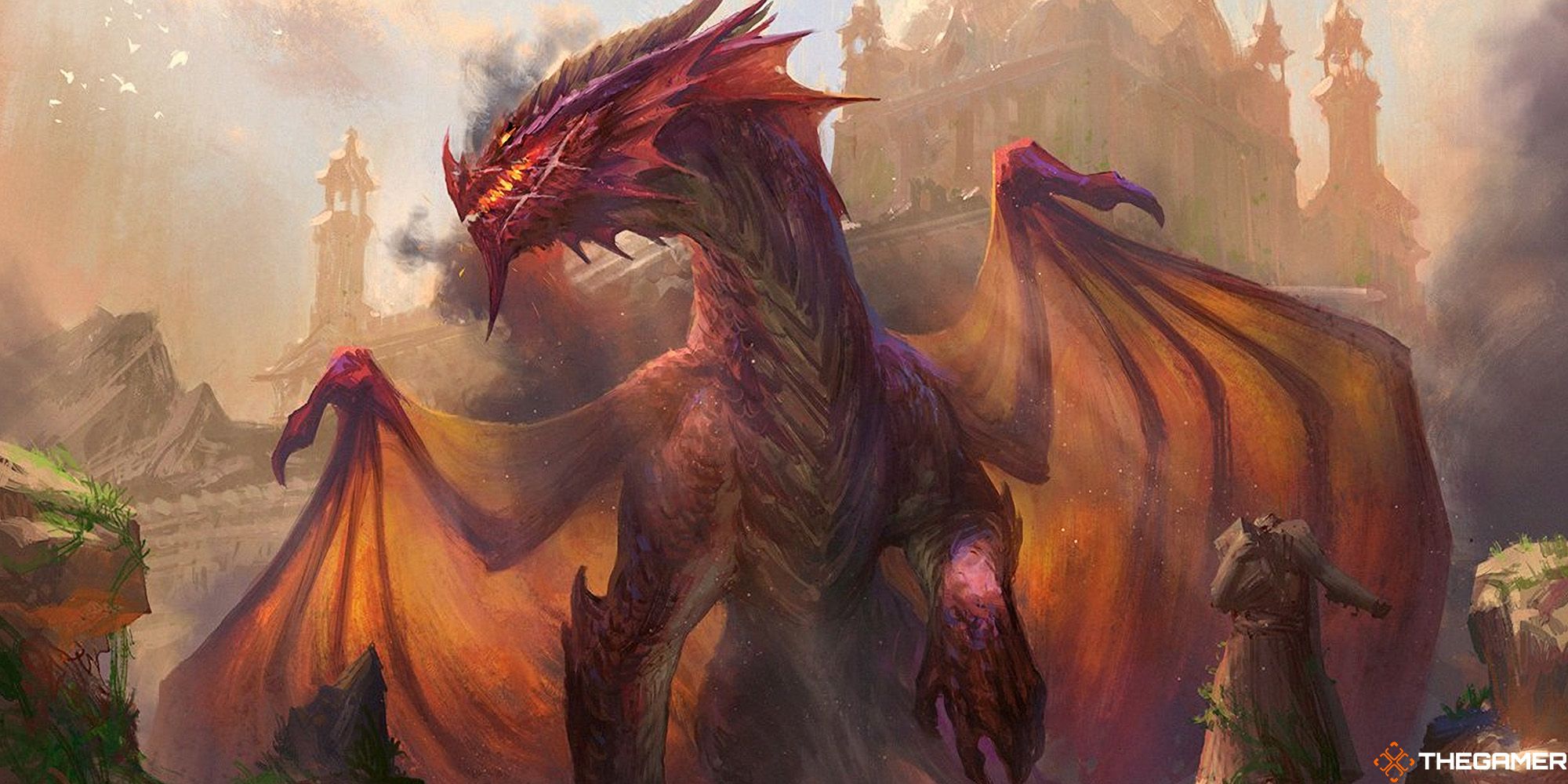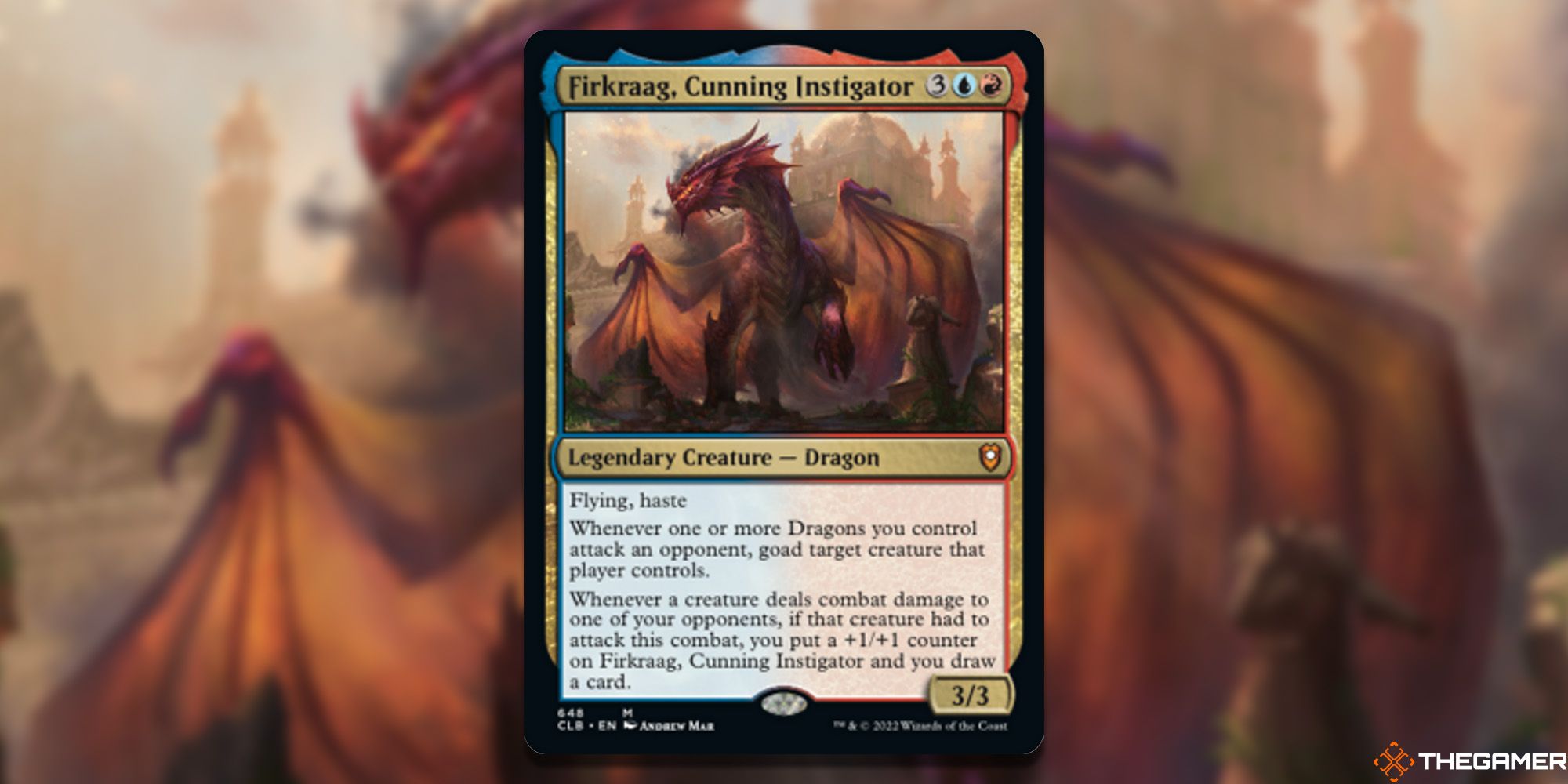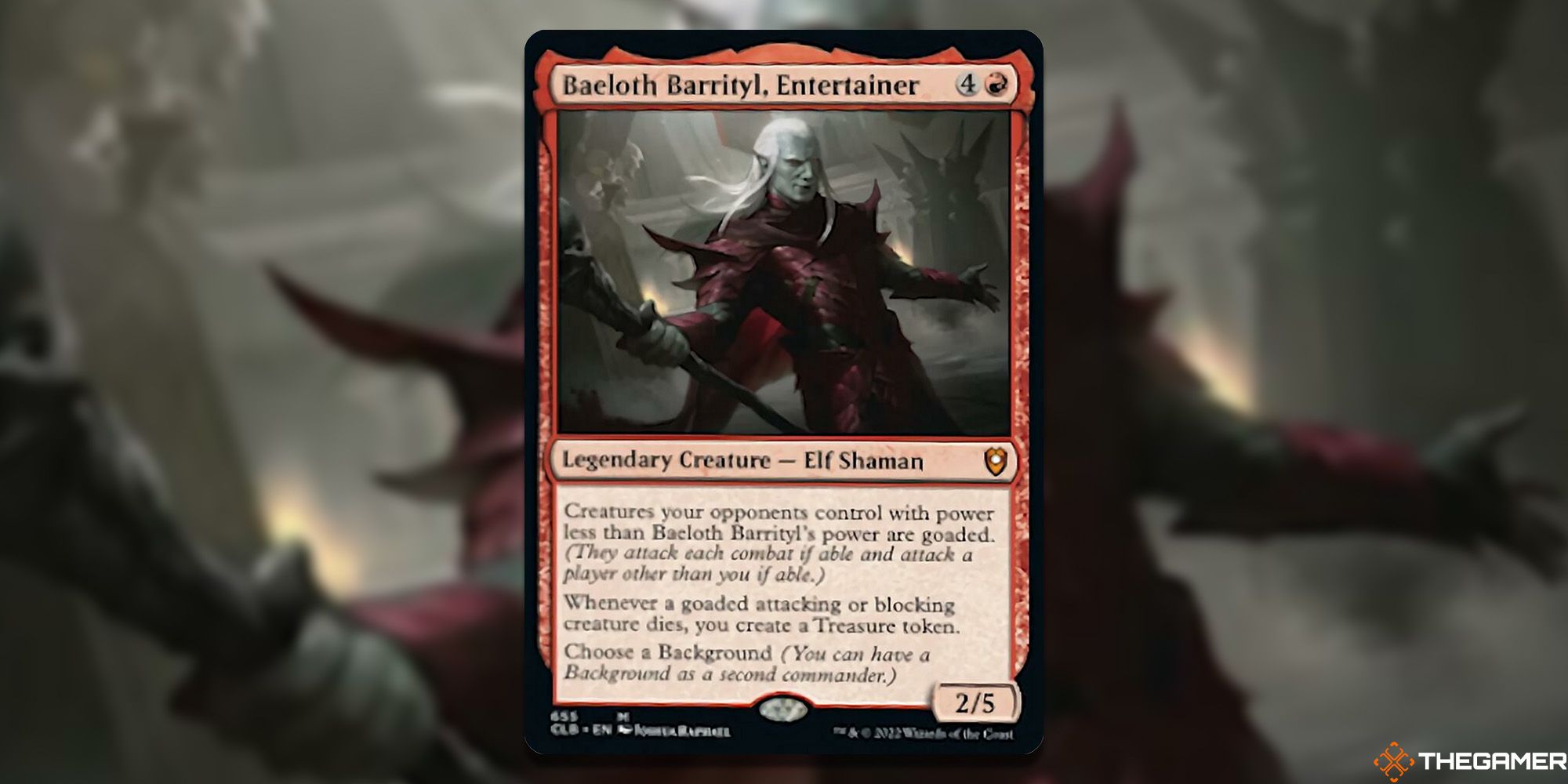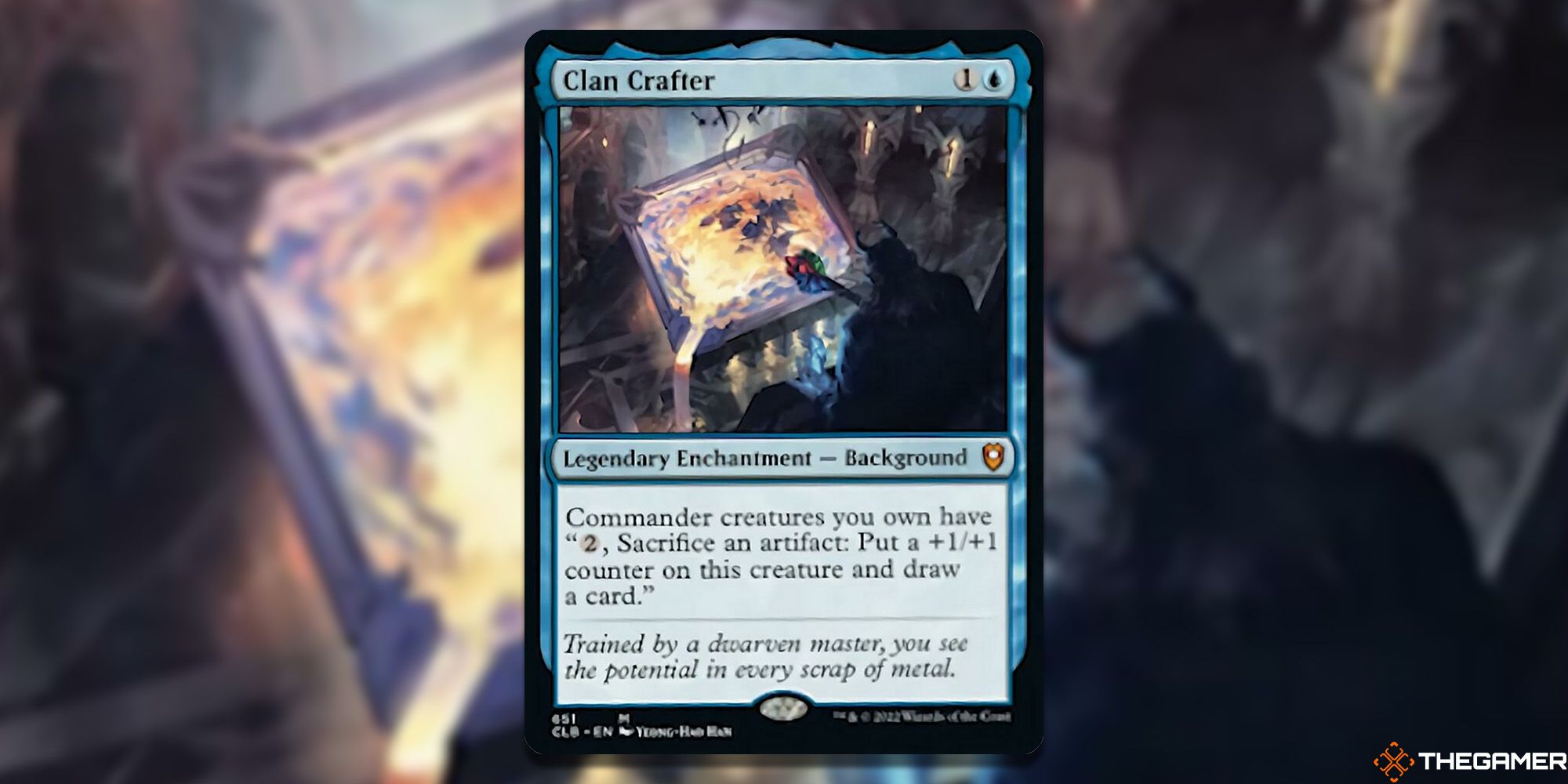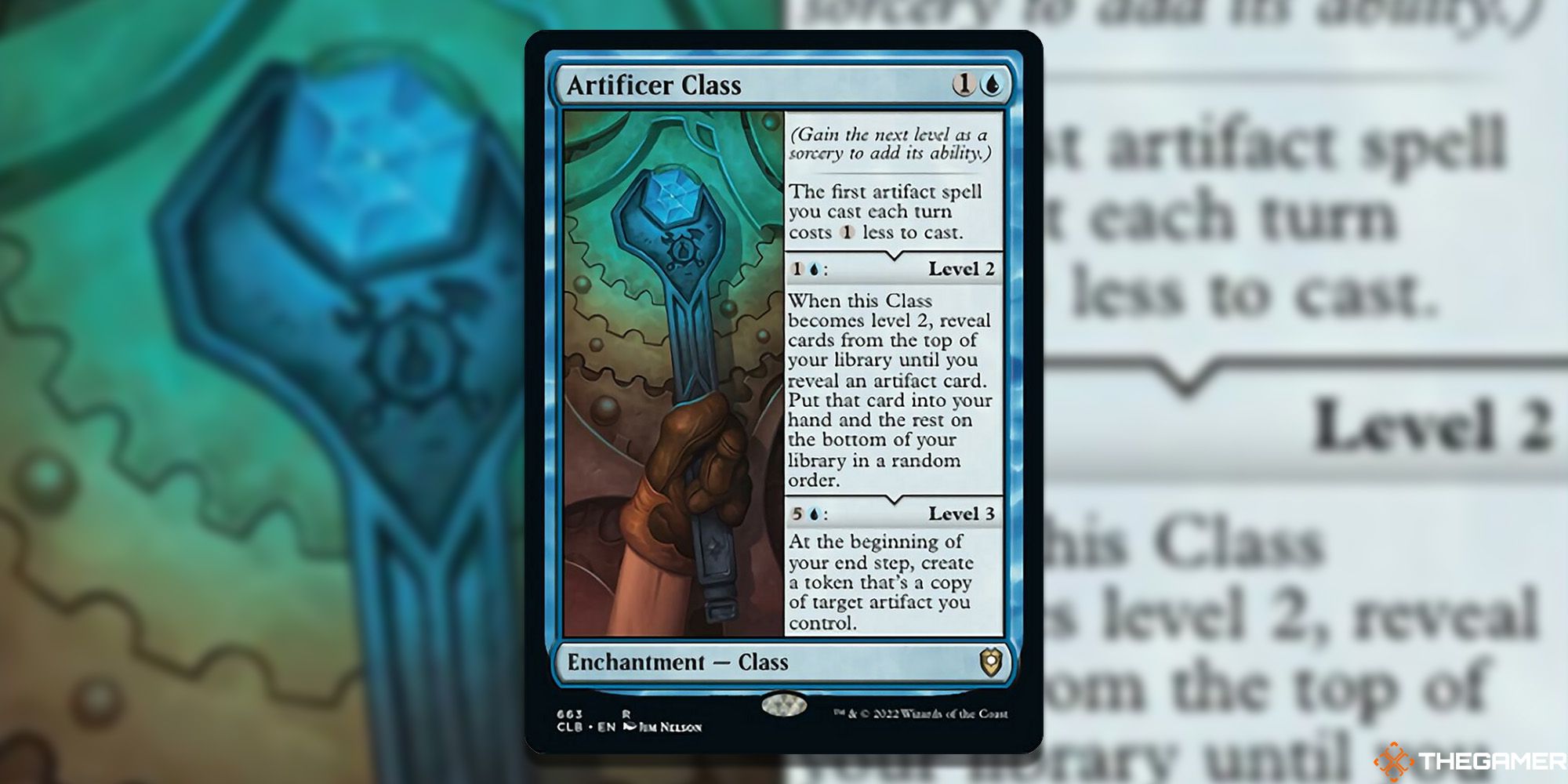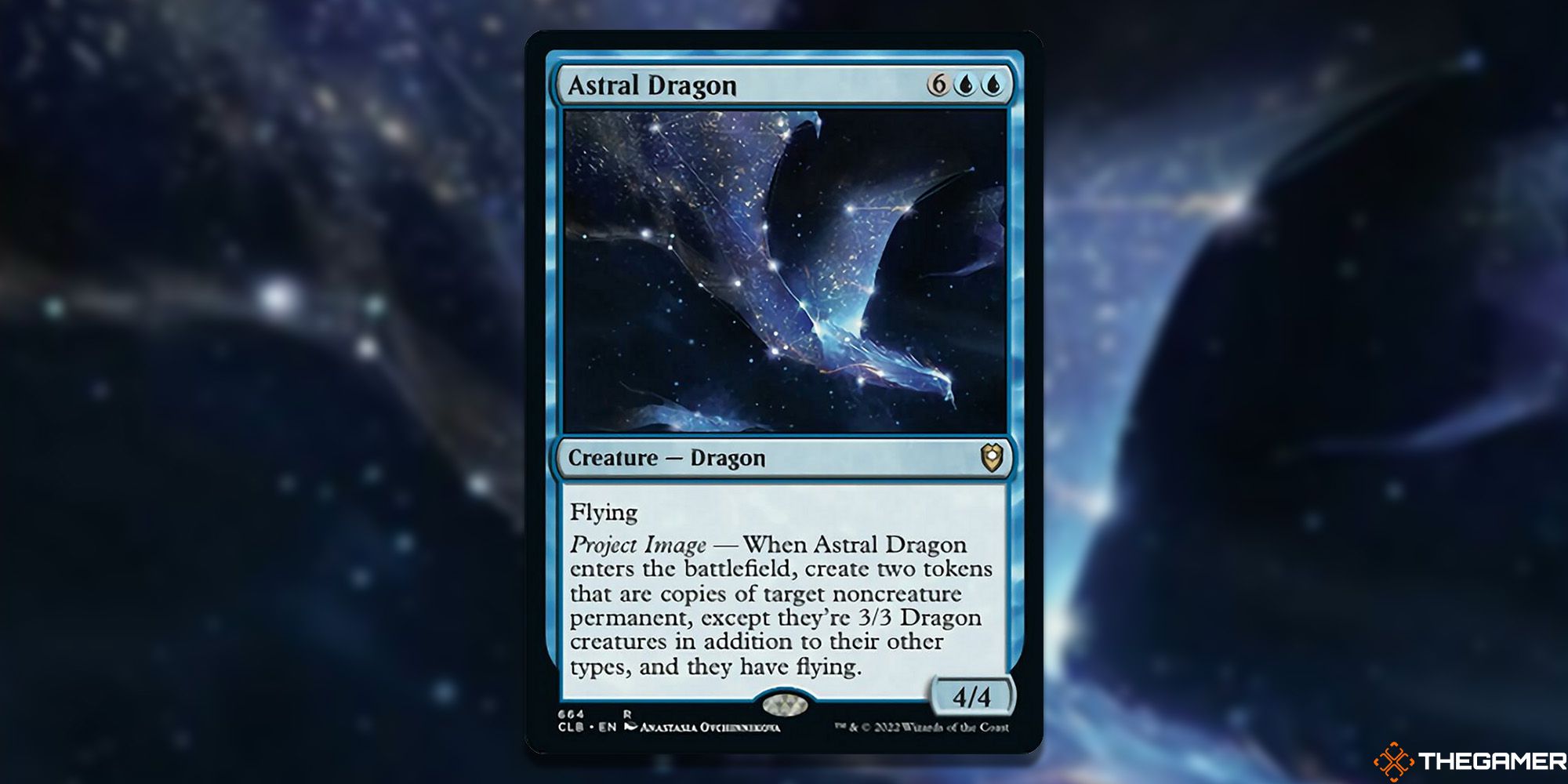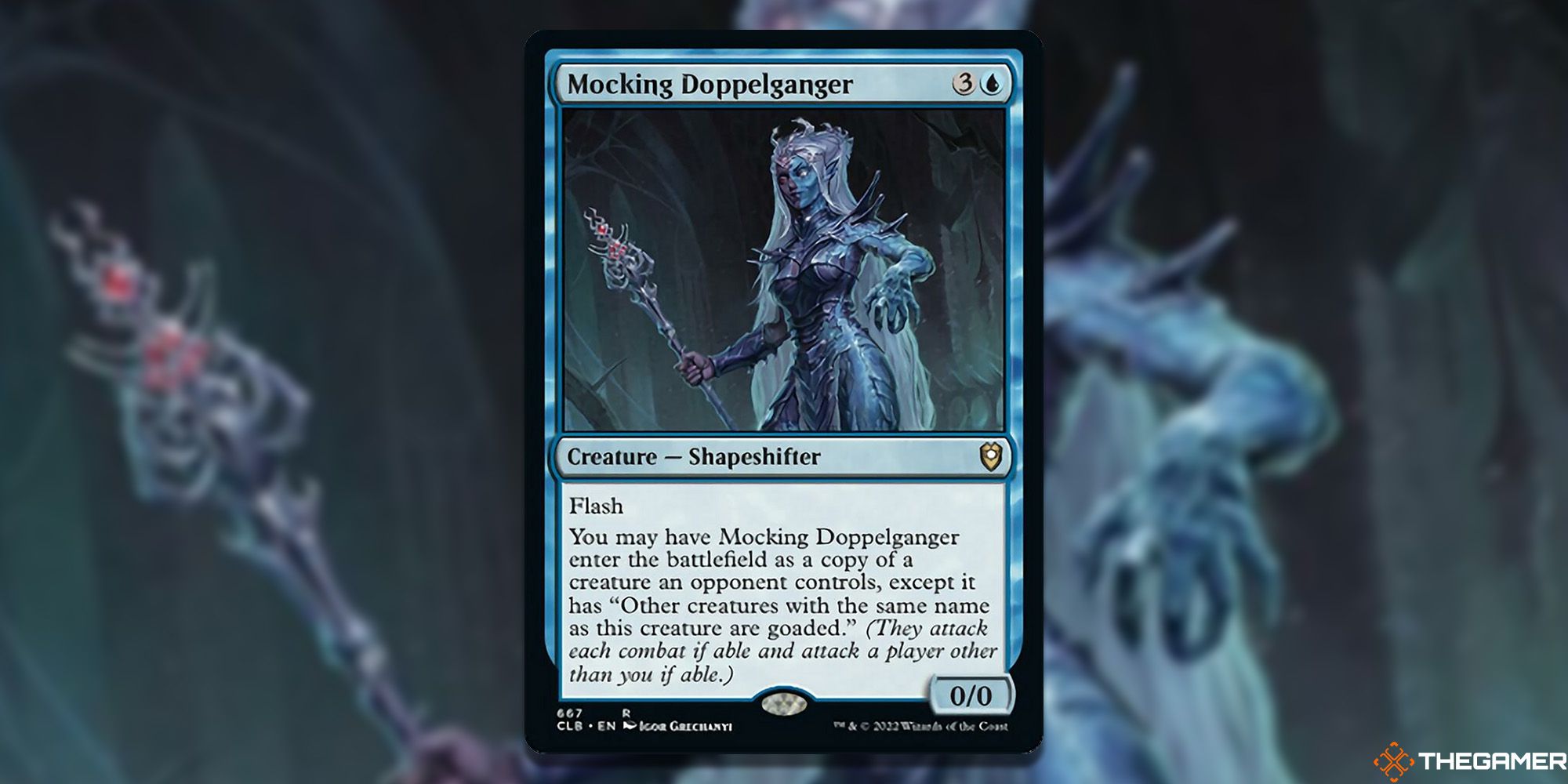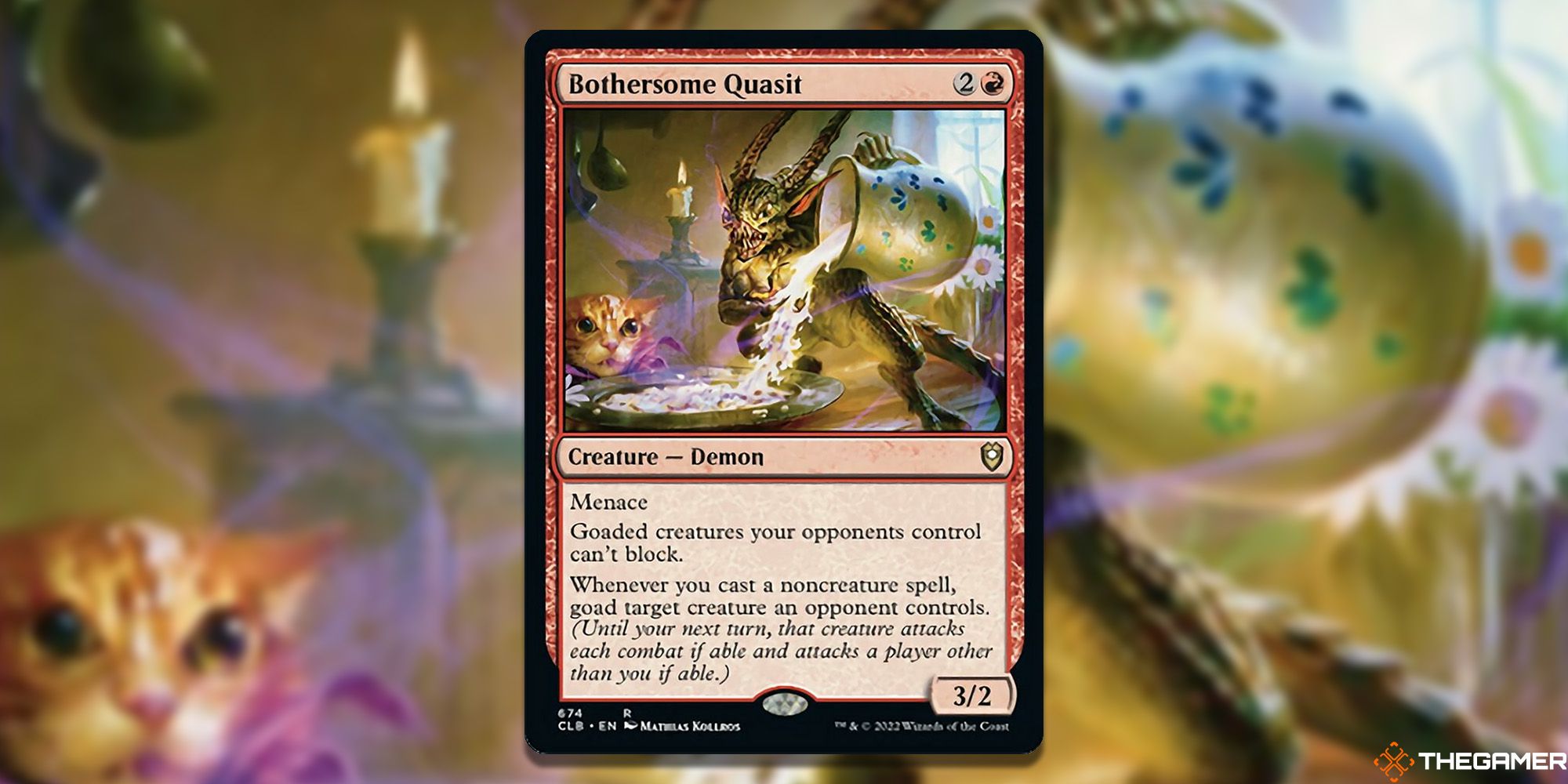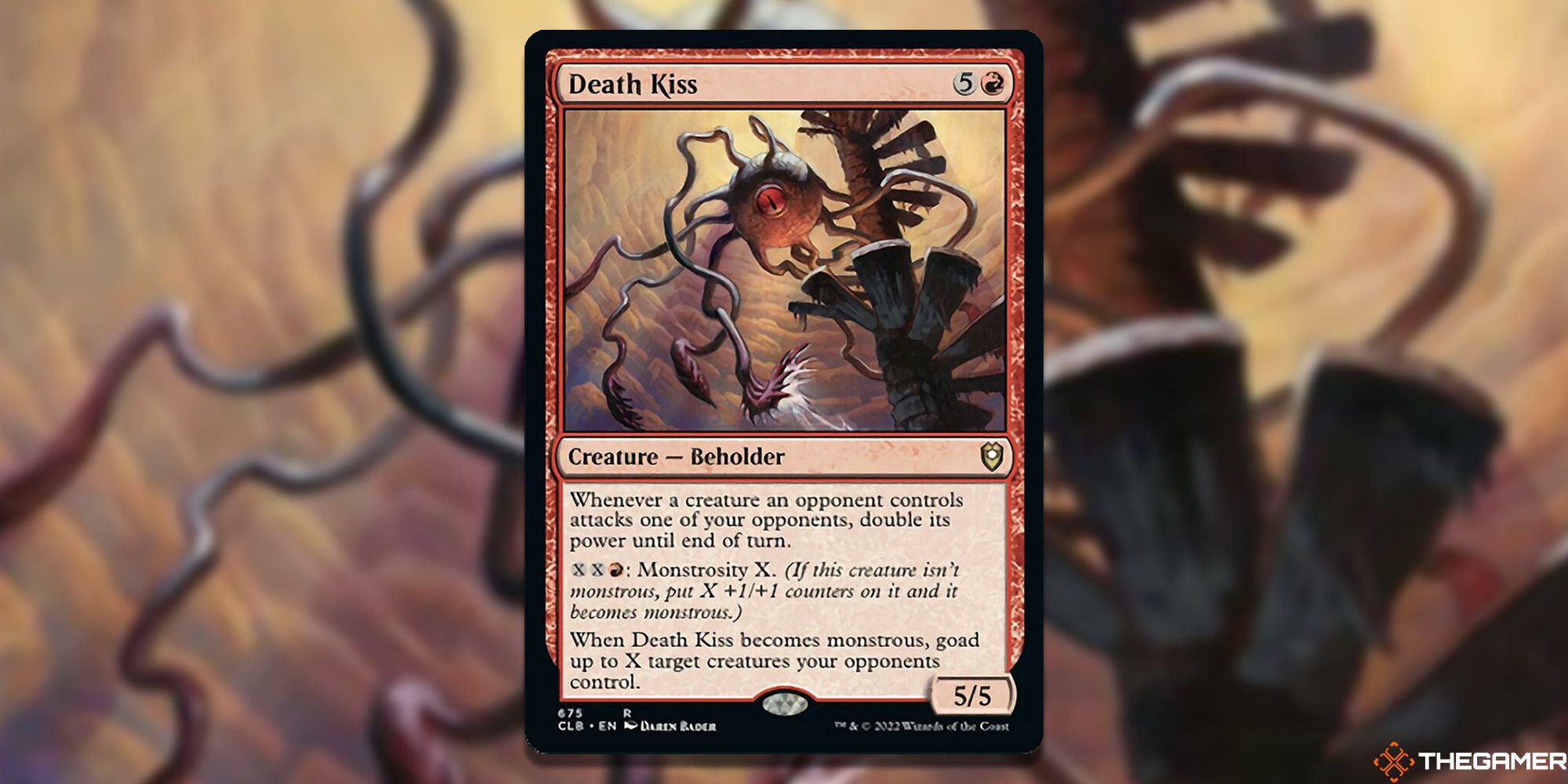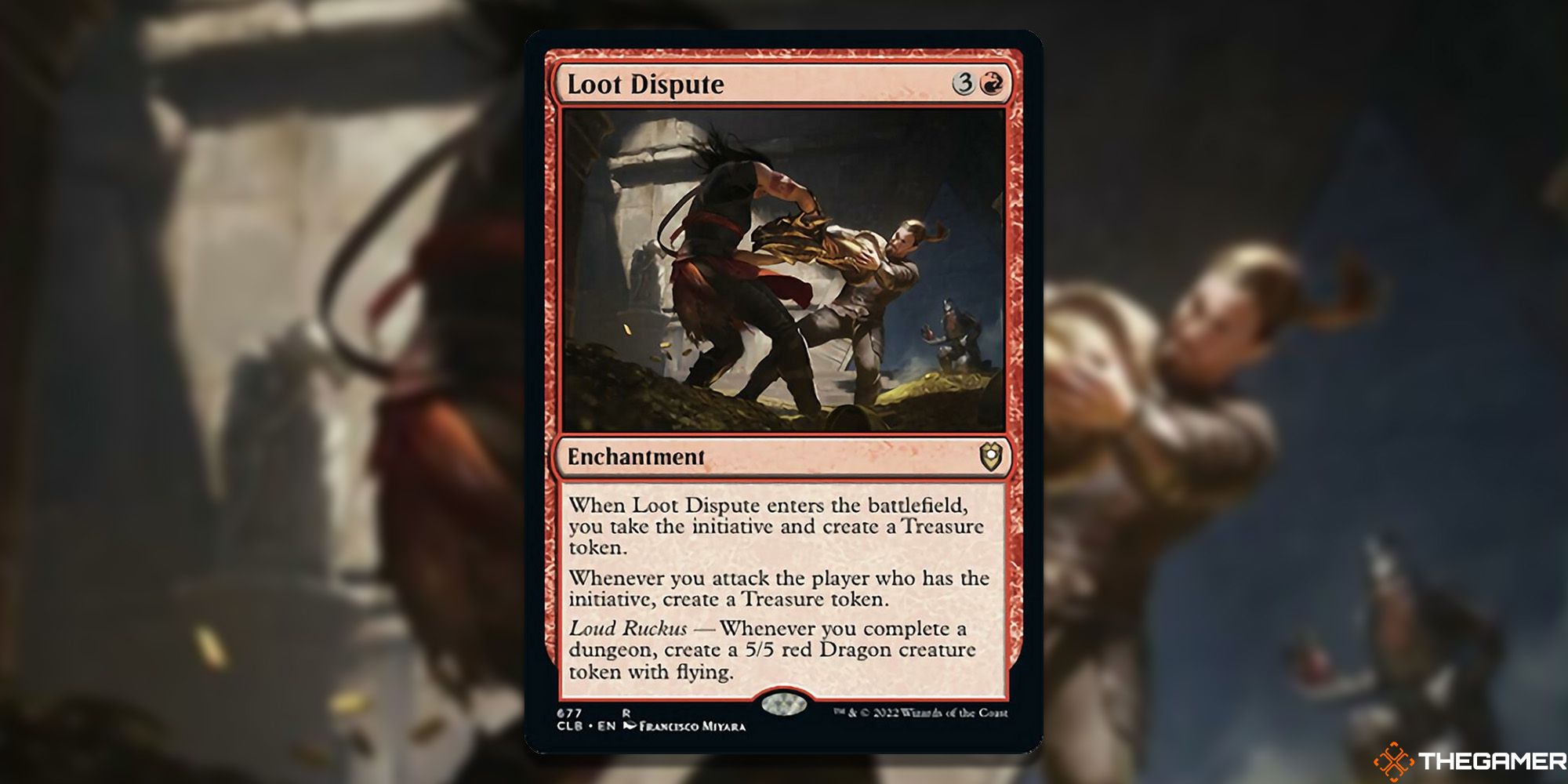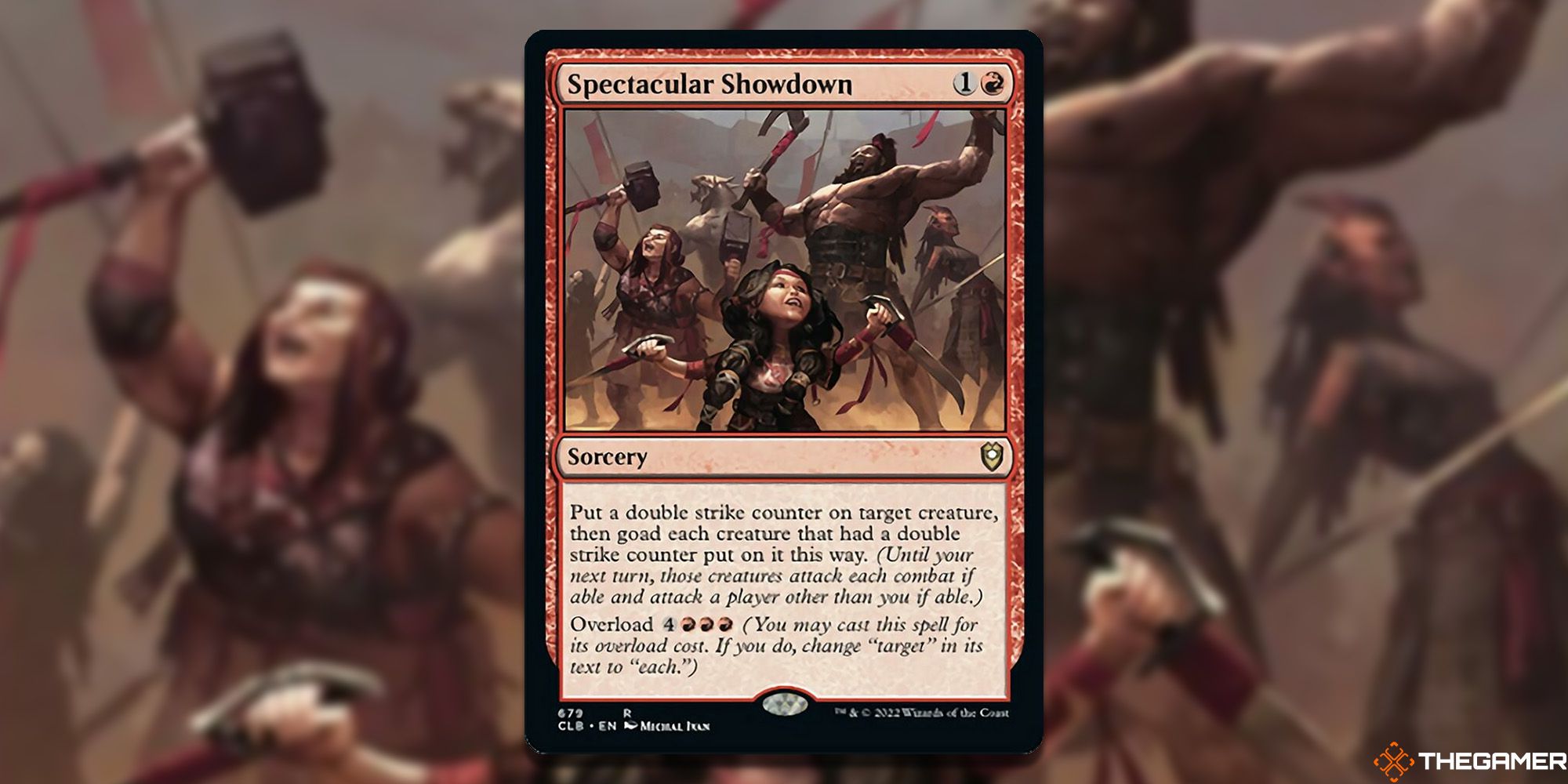Quick Links
As you would expect from a Commander-focused product, Magic: The Gathering’s Commander Legends: Battle For Baldur’s Gate is coming with a full suite of four preconstructed decks for you to buy and shuffle up.
The first of these decks is Draconic Dissent, an Izzet (blue/red) deck built around Firkraag, Cunning Instigator. This deck is all about two things: Dragons and goading. Forcing your opponents to attack each other can cause chaos at the table, and, with these ten cards exclusively debuting in the deck, you’ll have a few new powerful tools for really inciting some mayhem.
Firkraag, Cunning Instigator
Three generic, one blue, one red legendary creature – Dragon – 3/3:
Flying, haste.
Whenever one or more Dragons you control attack an opponent, goad target creature that player controls.
Whenever a creature deals combat damage to one of your opponents, if that creature had to attack this combat, you put a +1/+1 counter on Firkraag, Cunning Instigator and you draw a card.
As the face commander of this deck, Firkraag showcases the main plays: throw out lots of Dragons, and use them to goad your opponents into attacking each other. While there have been complaints about how frequently goad is showing up in Commander products recently, tying it to an expensive creature type like Dragons is an interesting way to hold it back a bit.
Baeloth Barrityl, Entertainer
Four generic, one red legendary creature – Elf Shaman – 2/5:
Creatures your opponents control with power less than Baeloth Barrityl’s power are goaded.
Whenever a goaded attacking or blocking creature dies, you create a Treasure token.
Choose a Background.
If Firkraag is an attempt to make a ‘reasonable’ goad commander in this new Commander Evergreen era, Baeloth, the secondary commander for the deck, is the opposite. This feels overly oppressive, especially for a preconstructed deck intended for new players.
This is a new kill-on-sight commander, thanks to how easy it is to puff him up with equipment, counters, or enchantments. It doesn’t help that the Background exclusive to this deck is designed to do just that.
Clan Crafter
One generic, one blue legendary Enchantment – Background:
Commander creatures you own have “Pay two generic, sacrifice an artifact: put a +1/+1 counter on this creature and draw a card”.
On its own, this is potentially one of the more interesting Backgrounds released in Baldur’s Gate. Having a sacrifice outlet for artifacts at instant speed can be very useful, and giving you counters and card draw for doing so makes it even better.
It’s just a shame that this has been paired with Baeloth Barrityl in a Commander landscape that is so rife with Treasure that can easily be thrown at it to allow it to grow and Goad yet more creatures.
Artificer Class
One generic, one blue enchantment – Class:
The first artifact spell you cast each turn costs one generic less to cast.
Pay one generic and one blue mana when at level one: Level Two – When this Class becomes level two, reveal cards from the top of your library until you reveal an artifact card. Put that card into your hand and the rest on the bottom of your library.
Pay five generic and one blue when at level two: Level Three – At the beginning of your end step, create a token that’s a copy of target artifact you control.
Thanks to the ubiquity of Sol Ring and Arcane Signet in Commander, Artificer Class may well become a new auto-inclusion for any blue deck. Hitting a mana rock with the level two ability you can then use to level up and make copies of every turn is ridiculous ramp for a colour that doesn’t normally come by it as easily.
If copying mana rocks seems small to you, then you could beef up your pillow forting by copying a Norn’s Annex, give yourself lots of card draw with an Esper Sentinel, or just go haywire with additional Academy Manufactors.
Astral Dragon
Six generic, two blue creature – Dragon – 4/4:
Flying.
Project Image – when Astral Dragon enters the battlefield, create two tokens that are copies of target noncreature permanent, except they’re 3/3 Dragon creatures in addition to their other types, and they have flying.
Noncreature animation is always funny, and turning a land, enchantment, artifact, or planeswalker (though be careful of the legend rule) into two flying dragons is always going to get a laugh at the table. And yet there is a lot more going on here than it first seems: Astral Dragon is an excellent blink target through something like Displacer Kitten to keep the tokens coming.
A particularly good thing to copy would be a land. As the cards retain all the types of the original, a land creature can’t be destroyed by anything that reads “nonland permanent”. Not only does that give the Dragon a bit of protection, it also allows them to tap for mana.
Mocking Doppelganger
Three generic, one blue creature – Shapeshifter – 0/0:
Flash.
You may have Mocking Doppelganger enter the battlefield as a copy of a creature an opponent controls, except it has “Other creatures with the same name as this creature are goaded.”
Mocking Doppelganger is an awesome double-whammy of a creature. Not only can it enter as a perfect copy of someone else’s biggest threat, doing so will then goad the original and throw it into the line of fire.
The best bit is that, despite seeming like it should, Mocking Doppelganger doesn’t actually target anything. You can copy a creature with hexproof, shroud, ward, or protection just as you could any other – one of the few ways to make such a creature goaded without having to do it to the entire battlefield at once.
Bothersome Quasit
Two generic, one red creature – Demon – 3/2:
Menace.
Goaded creatures your opponents control can’t block.
Whenever you cast a noncreature spell, goad target creature an opponent controls.
On any other card, goading a creature whenever you cast a noncreature spell would be a huge deal, especially when it’s on a three-mana card. Shockingly, Bothersome Quasit outdoes itself with the preceding line that prevents any goaded creature from being able to block.
For targeted goad, such as from Firkraag, it’s a great way to shift a big, hefty blockers out of the way. But when you put it behind a mass goad effect, like Baeloth Barrityl or a Disrupt Decorum, the effect is potentially game ending. Your opponents will likely have to take a large amount of the damage from each other player’s attacks, and your non-goaded creatures can breeze on past them to take the win.
Death Kiss
Five generic, one red creature – Beholder – 5/5:
Whenever a creature an opponent controls attacks one of your opponents, double its power until end of turn.
X generic twice, one red mana: Monstrosity X.
When Death Kiss becomes monstrous, goad up to X target creatures your opponents control.
Monstrosity is a returning mechanic from the original Theros that allows you to pay a mana cost and put X 1/1 counters on Death Kiss. When you do, it ‘becomes monstrous’, triggering its second ability to goad a lot of creatures.
When paying a double X cost, you need to pay the same amount into both instances – in other words, you put counters on Death Kiss and goad creatures equal to half the total amount of generic mana you paid. It’s a pricey ability, but with no upper ceiling you could be pulling off some huge plays with it.
Loot Dispute
Three generic, one red enchantment:
When Loot Dispute enters the battlefield, you take the initiative and create a Treasure token.
Whenever you attack a player who has the initiative, create a Treasure token.
Loud Ruckus – Whenever you complete a dungeon, create a 5/5 red Dragon creature with flying.
Four mana for this feels like a big ask, as you have to jump through a lot of hoops before getting a decent amount of value off of it. Taking the initiative and completing a dungeon can take multiple turns, and yet you’re also incentivised to repeatedly lose the initiative and then take it back. If you pull it off, you’re rewarded with a 5/5 Dragon and the whole rigmarole starts again.
It almost feels like this was designed for a different deck. If you successfully goad your opponent’s creatures, they can’t take initiative from you. If they can’t take initiative from you, you can’t take it back and get a Treasure token, and so you’ll have to sit and muddle through the whole dungeon for the sake of one Dragon roughly every five turns.
Spectacular Showdown
One generic, one red sorcery:
Put a double strike counter on target creature, then each goad creature that had a double strike counter put on it this way.
Overload: four generic, three red mana.
Following Commander 2020’s Avenging Huntbonder, this is the second card ever that can give a creature a double strike counter. This makes it great for counter-centric, keyword soup, or even Kamigawa Modified decks as another way to get an uncommon counter type onto a creature.
By paying the overload cost, you can put double-strike counters on every creature and goad all of them at once. This also affects your creatures, but if you combine it with a Bothersome Quasit it could be all you need to close out a game.

